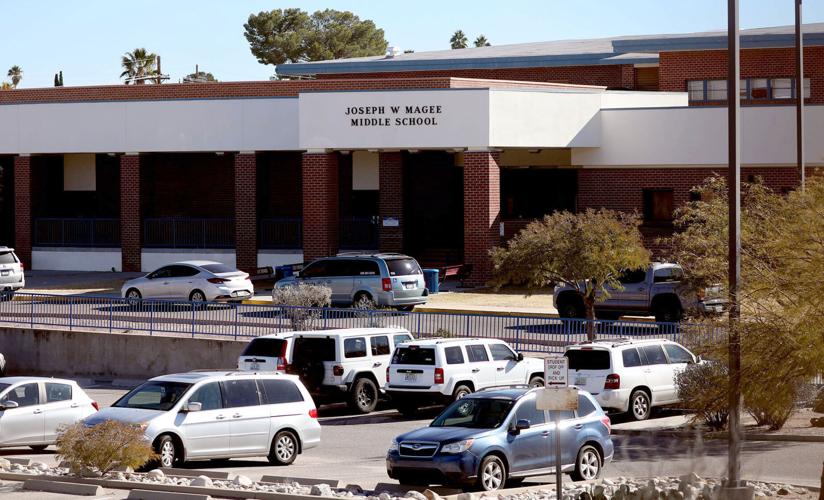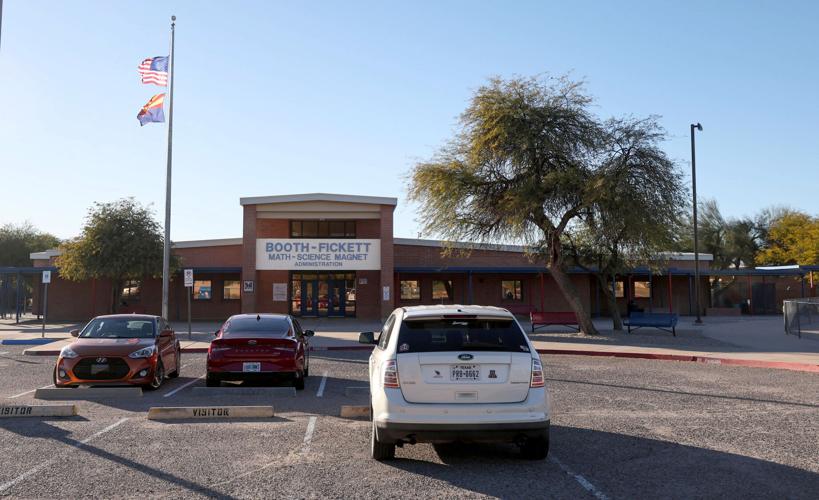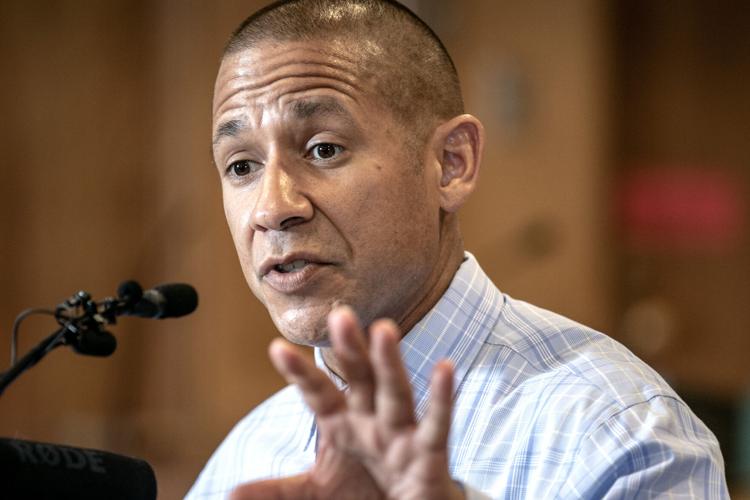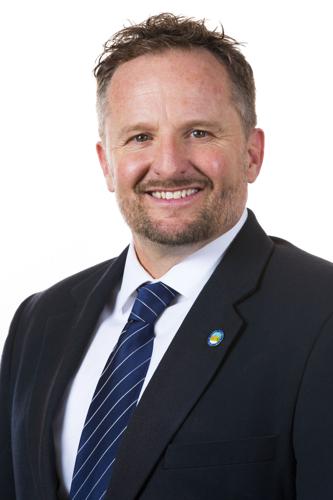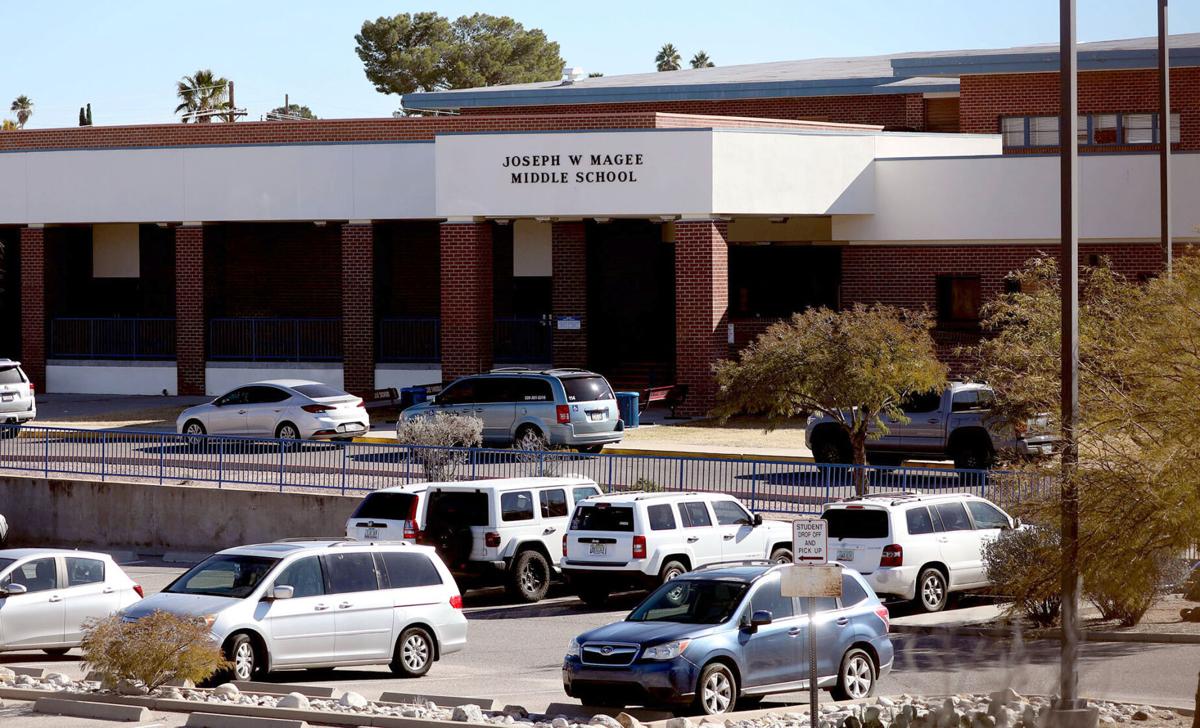Tucson Unified School District’s superintendent says no district schools are at risk of closing, despite a new report showing enrollment drops of more than 20% at 12 campuses during the pandemic.
“There are absolutely no recommendations or conversation about closing any schools,” TUSD Superintendent Gabriel Trujillo told the Star on Friday. “Enrollment loss has been … prevalent throughout the county. TUSD did take a hit.”
A dozen TUSD schools lost more than 20% of their student enrollment between school years 2019-20 and 2020-21, when COVID was at its height, according to data compiled in a new report by nonprofit education news outlet The 74 that also used research by the Brookings Institution.

A 28% drop in students was logged at Booth-Fickett Math and Science Magnet School, 450 S. Montego Drive, during the height of the pandemic, the second highest percentage drop within TUSD, according to a new report.
They are: Dunham Elementary, Booth-Fickett Math/Science Magnet, Ford Elementary, Gridley Middle, Henry Elementary, Magee Middle, Myers-Ganoung Elementary, Harold Steele Elementary, Utterback Middle, Sewel Elementary, Warren Elementary and Borton Primary Magnet.
The district projects an average daily membership loss, or ADM, of nearly 1,094 students between fiscal years 2023 and 2024, officials told the TUSD Governing Board at a Dec. 12 meeting. The state uses that ADM number, a calculation based on the 40th day of school each year, to determine funding for schools, which is allocated per pupil.
The projected enrollment loss would result in a loss of more than $5 million for TUSD’s budget.
It is unclear where the students have gone, Trujillo said.
“We have kids that go to charters, we have kids that leave us for homeschool,” he said. “We have kids that leave us for neighboring districts.”
Some prospective students leave Pima County altogether, Trujillo added.
Private schools are also in the mix.
“What’s tough is to figure out who’s using ESA dollars to pay to go to private (schools). That information isn’t readily available,” Trujillo said, referring to the state’s Empowerment Scholarship Account program, which the Legislature expanded in 2022 to be universal, meaning any student can get a voucher of taxpayer money to attend private or religious schools.
State data says that in the first quarter of fiscal year 2024, (July 1, 2023, to Sept. 30, 2023), 589 students left TUSD for other institutions via ESAs.
That data does not indicate which schools took the students in.
Trujillo said that while closing a school can be cost effective, maintaining the empty facilities can be costly, too.

Trujillo
The cost on community morale can be high as well, he said.
A number of TUSD properties closed before Trujillo was appointed as district superintendent in 2017.
“There is expense with goodwill, with neighborhood associations that are upset and frustrated with boarded up buildings that have become burdensome on our local neighborhoods, where we struggle as a district to maintain those properties,” he said.
It’s not all about the money, Arizona Superintendent of Public Schools Tom Horne told the Star. He asserted in an interview last week that social-emotional learning, or SEL, and “ethnic studies” are partly to blame for enrollment declines, particularly at TUSD.

Tom Horne
“I think sometimes schools lose students if the parents feel that they are not meeting the students’ needs,” said Horne, a Republican elected to the post in 2022. “Students need to focus more on getting good academic results with the students and not be affected by distractions.”
When asked about Horne’s assessment, Trujillo said, “Superintendent Horne is a politician — an elected official. I don’t get involved in politics.”
It’s more about circumstances and options, Trujillo said.
The two officials did seem to agree on the charter school factor.
“You have smaller charter entities that are able to be quick and nimble and creative and innovative with their schedules; for example, being able to offer multiple sessions throughout the day,” Trujillo said.
Additionally, smaller class sizes — particularly at the elementary level — are a draw to parents.
“Parents aren’t necessarily crazy about the six-, seven- or 800-student elementary school,” Trujillo said. “They like a smaller elementary environment, which is what charters a lot of times can offer.”
Pima County’s population of K-12 students has remained stable. That, too, creates obstacles for districts.
“It’s a smaller pool of kids, so you have to make a bigger splash,” Trujillo said.
Enrollment loss has shown up in a number of districts throughout Pima County, data reported by The 74 revealed.
Between school years 2019-20 and 2020-21, some schools in Amphitheater, Flowing Wells, Sahuarita, Sunnyside and Vail districts also had 20% or more decreases in student bodies.
Pima County Schools Superintendent Dustin Williams said he does not know of any county district schools at risk of closing.
The most recent Pima County district school to close its doors was Thornydale Elementary in 2018, he said. The Marana Unified School District school, at 7651 N. Oldfather Road, was shuttered because of sustained enrollment drops.
Williams, a Democrat, said that as an elected official watching the closure, “The one thing that stood out the most to me besides the dollars and cents was the trauma it put on the families and how hard the process was.”

Dustin Williams
School closures send shockwaves through communities, as schools are often sources of community pride and unity, Horne said.
For that reason, Horne said, closing a school can be a brave political decision.
“If you close schools, (community members) will be mad, and then you pay a political price. But it’s the right thing to do,” Horne said. “The main thing is to have enough money to pay your teachers. You can’t do that if you’re inefficient.”
Williams said countywide numbers over time, which his office track, show some smoke but don’t indicate a “five-alarm fire.”
Essentially, he said, shorter-term enrollment numbers in Pima County, whose population is “stagnant,” are a moving target.
“You want parents to have options but that does cause a big fluctuation over time. And you’ll see kids that will move around, they’ll go from district schools, to charters, possibly go into a private (school) … go to homeschool … then it goes the other way. They decide what the best option is and what they want to do.
“When there are a lot of choices, you have a lot of movement,” Williams said.
Horne said, “I think that’s a good aspect of a system where parents have choices and make sure that the students’ needs are being met.”
State grades, which Horne’s Arizona Department of Education use to designate school quality, can affect enrollment, but only to a degree, numbers indicate.
Take TUSD’s Henry Elementary School, 650 N. Igo Way. The school, which serves grades preschool through fifth, received a “B” on the state report card the last two years.
Even so, its enrollment declined 22% during the pandemic years studied by The 74. But the school’s student numbers rebounded slightly the following school year, according to state data.
Trujillo said the school has preschool and afterschool programs and is in a safe location. Anna Henry Elementary will also receive capital improvements, thanks to voters’ approval of the district’s $480 million bond package in November.
Regardless, Trujillo said Anna Henry Elementary is still a campus to watch and will be among TUSD campuses undergoing “rebranding” efforts.
“We have to figure out how to refresh and rebrand the school in a way that’s going to attract parents away from the charters that surround that area,” he said. “It’s very much a competitive arena when you’re going head-to-head with charters in this open enrollment atmosphere.”
Tucson Unified has plans for an ambitious campaign to gain additional students, officials have said. Those efforts include developing departure analyses to break down why students are leaving and to where, becoming more flexible and innovative with programming, and implementing more scheduling flexibility and creativity, Trujillo said.
He added, “We also have the responsibility to look at the resources that we do have and say, ‘All right, what do we need to do to become the preeminent choice for K12 education in this county again?’”
Regardless, outside elements like ESAs will likely continue to affect enrollment in public school districts like TUSD, Williams said.
He said ESAs haven’t forged a huge dent in Pima County districts’ enrollments, including that of TUSD, but it could be a matter of time.
Private schools have the students they will have, he said. “Those always have steady enrollments. And that’s just how it’s gonna be. So many of those kids never were going to district schools in the first place.”
Universal vouchers and ESAs could create more demand for district school alternatives, increasing opportunities for businesses poised to create for-profit alternatives, he said.
“They would have to draw upon a collection of students,” Williams said. “And where are those students going to come from?”
Get your morning recap of today's local news and read the full stories here: tucne.ws/morning


